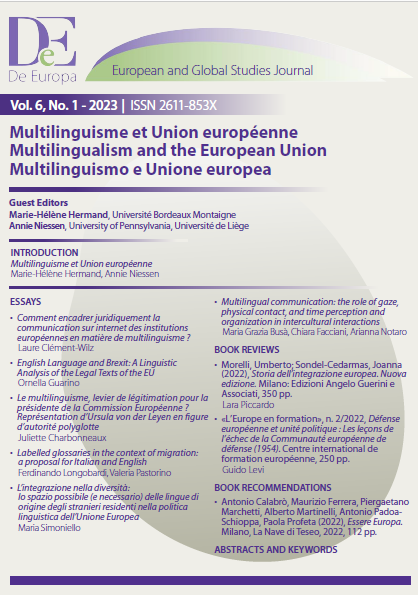Multilingual communication the role of gaze, physical contact, and time perception and organization in intercultural interactions
DOI:
https://doi.org/10.13135/2611-853X/7139Abstract
Research on multilingualism and intercultural communication has been gaining large recognition. However, a number of subject areas are still largely underexplored. For example, verbal communication is prioritised while little emphasis is given to the multimodality of multilingual and multicultural interactions. Also, while some studies focus on the role of gestures in intercultural communication, elements such as gaze, physical contact, and time are far less researched. However, the lack of attention to some non-verbal elements can create misunderstandings, particularly when people share a spoken code only partially, as is the case with non-native speakers. Thus, non-verbal language should be given a wider scope in multilingual and intercultural research.
This paper is a preliminary investigation of how intercultural differences in the use and interpretation of non-verbal codes of communication can affect interactions between migrants and social workers in Italy. The focus is on gaze, physical contact, and time perception and organization. The paper provides a qualitative analysis of focus groups and online questionnaires submitted to social workers working in northern Italy and supporting migrants in their daily integration in the society. The results show that the use and interpretation of gaze, physical contact and time vary considerably depending on the individual migrant as well as their culture of origin. Considerations are drawn on the extent to which cultural differences in the interpretation of non-verbal codes can create misunderstandings and undermine migrants’ integration.
Keywords: Intercultural communication; non-verbal communication; migration; gaze; physical contact; time




 The journal has been approved for inclusion in DOAJ. The DOAJ listing of the journal is available at
The journal has been approved for inclusion in DOAJ. The DOAJ listing of the journal is available at 

